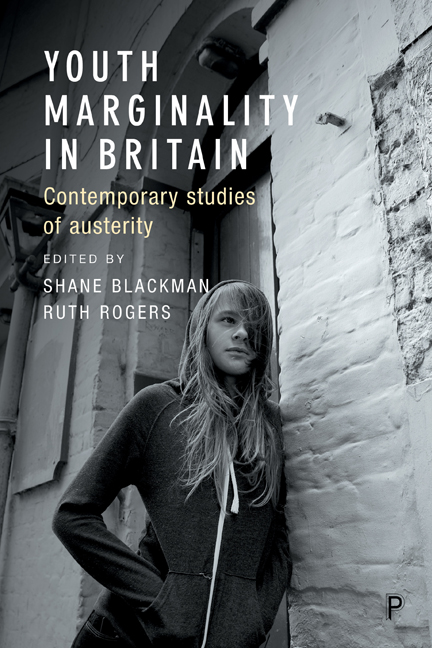six - Pramface girls? Early motherhood, marginalisation and the management of stigma
Published online by Cambridge University Press: 05 April 2022
Summary
Introduction
This chapter examines how marginalised working-class youth, in particular teenage mothers, come to be represented through such labels as ‘chavette’ and ‘pramface’ in a reconfiguration of class-based inequalities in the UK (Haywood and Yar, 2006; Jones, 2011; Adams and Raisborough, 2011; Skeggs and Loveday, 2012; Young, 2012). The chapter explores the deeply affective nature of these representations, how they leak out into everyday life and come to adhere to particular bodies and spaces (Goffman, 1963; Hall, 1980).
A contribution of the chapter is to move beyond the familiar terrain of textual deconstruction, to further consider how working-class young women manage social class stigma and might themselves speak back to these markers of abjection (Back, 2007). It is suggested that young motherhood needs to be understood within the context of what is happening to motherhood at a broader societal level. The chapter illustrates how, in the contemporary context, differences between women may be polarised and compounded by the experience of becoming a mother. Significantly, the chapter considers the ways in which social differences between women may be played out in the cultural sphere of representations and practices of consumption (Byrne, 2006). An overarching theme of the chapter discusses the ways in which motherhood has become a site of new social divisions between women, concluding that while the stubborn markers of class disparagement cannot easily be displaced, paying attention to how they might be understood and evaluated within local youth circuits offers nuanced readings that may resonate more closely with working-class experience.
The chapter is based on data derived from a five-year ESRC-funded project, beginning in 2005, exploring the transition to motherhood among a diverse sample of 62 first-time mothers in two contrasting locations (metropolitan and new town) in the South East of England documented in Making modern mothers (Thomson et al, 2011).Making modern mothers explores what it means to become a mother in ‘new times’ and how this can be understood as a moment of identity change, characterised by age and socioeconomic status. Noting how the increasing participation of women in higher education and the labour force since 1945 has transformed the shape and meaning of women's biographies (Lewis, 1992; Crompton, 2006), the study examines the uneven nature of change as reduced social mobility and widening inequalities between women are reflected in a movement towards later motherhood for the majority and early motherhood for a minority.
- Type
- Chapter
- Information
- Youth Marginality in BritainContemporary Studies of Austerity, pp. 105 - 116Publisher: Bristol University PressPrint publication year: 2017

